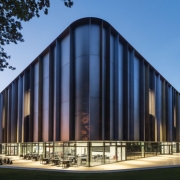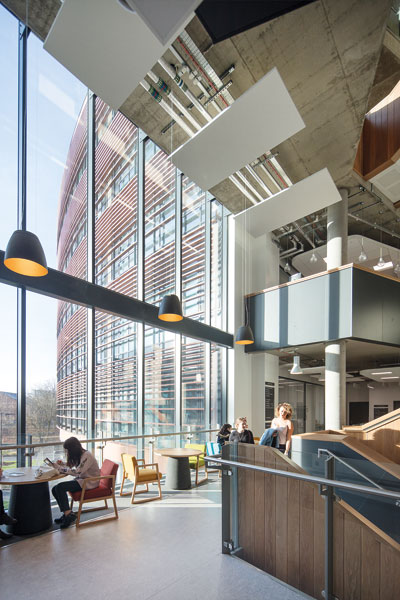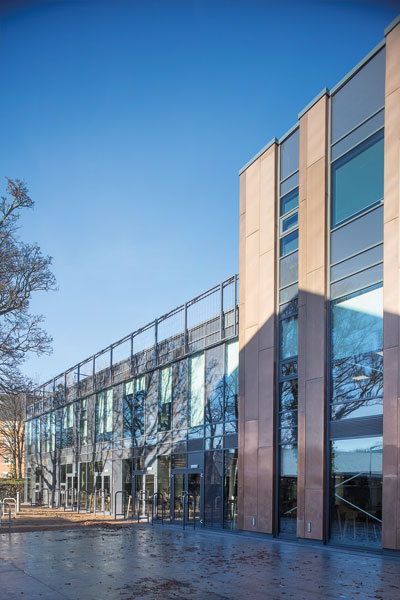By Nick Beard, Group Technical Officer, LHC Group
Can you describe some of the current financial / economic challenges faced by schools?
Like most other sectors, education is feeling the squeeze as the cost of living crisis deepens and the UK heads towards recession.
Frustrated with pay conditions, hundreds of thousands of teachers across England and Wales are set to strike throughout February and March – placing pressure on the government and National Education Union (NEU) to come to a last-minute deal on pay if they are to prevent pupils facing further disruption to their education.
School budgets are being stretched more than ever and any pay increases will have to be funded through efficiency savings, meaning other areas – such as building works and refurbishment – may lose out.
This is unfortunate, as many of the UK’s schools have become tired and are no longer fit for purpose, having been standing for up to 60 years in some cases. And while the government’s School Rebuilding Programme is going some way to addressing this, only a select few of the schools and sixth-form colleges most in need are able to benefit. The demand is high as the system-built sites of the 1960s and 70s near the end of their design lives.
How is that all affecting their refurbishment / new building programmes?
The cost of construction materials remains high and the labour shortage is continuing across the construction industry, meaning schools are finding it hard to make their budgets work and secure projects.
In January, British Steel announced a hike in its prices by £75 a tonne, while analysis of data from EU member states, the central EU database, Eurostat, and the UK Department for Business, Energy and Industrial Strategy (BEIS) shows the cost of labour in Britain has increased by 30% since the Brexit referendum.
Refurbishment, extension and new-build projects are also affected by the fact that contractors are often committed to projects – particularly in the education sector, where companies tend to find their money through refurbishment works – at least 18 months in advance. Therefore, forward planning is important but not always possible. For example, if schools want to plan works during the six-week summer holiday, it’s highly likely that all suitable contractors will have already committed to work by now.
This is when practices like offsite manufacturing can come into their own, as they minimise disruption and risks to staff and pupils and enable buildings to be put up quickly. This is particularly beneficial for refurbishment or expansion programmes, where they can be built in advance and then transported and installed on site within a six-week window.
Why might schools procure building work through a framework?
It makes sense for schools to procure through a framework as they have to comply with procurement regulations but may not have the in-house skills or resource to carry out the more complex and time-consuming procurement procedures the regulations require. Using frameworks removes a lot of this complex regulatory procurement part from the process and allows buyers to focus on securing suitable contractors for their specific project from a pre-vetted list.
At most schools, a capital project is something staff will more than likely only procure once in a lifetime, so the existing team and governors may not have the relevant expertise to do that. By using a framework, staff can get the framework provider to assist them with early market engagement and support and advice with the call off process.
What are the benefits for schools of procuring through a framework?
Frameworks can allow for faster procurement. As suppliers have already been through the statutory periods, schools can speed up the procurement process and better focus on what they need.
They also offer access to a selection of high-quality, pre-approved and pre-assessed contractors. This gives assurance to clients where the resource may not exist to undertake a procurement process alone.
There is also the option of procuring via mini competition or direct award, so frameworks can provide a solution where an urgent requirement necessitates.
And while there continues to be plenty of discussion around sustainability and creating buildings fit for the future, procurement frameworks can facilitate access to specialist consultants and expertise in carbon net zero building, or asset maintenance long-term.
Why might schools procure using an LHC framework?
Besides all of the benefits listed above, schools may choose to procure via an LHC framework for the comprehensiveness and flexibility our frameworks provide. Procuring via an LHC framework enables the clients to work with LHC and our appointed companies to deliver exactly what they need.
When did LHC first launch a framework dedicated to the building, extension, and refurbishment of schools and what was this called?
Our Education Framework for Contractors (EF1) was launched in 2009 and was predominantly aimed at lower cost refurbishment works for education.

How and why has LHC developed and adapted its framework that covers the building, extension, and refurbishment of schools?
Following EF1 we launched our Schools and Community Buildings framework (SCB1) in 2013, which was picked up by the Educational Funding Authority in the South East because they didn’t have a lower value framework for contracts.
We evolved SCB1 in 2017 to become SCB2 and, following feedback from clients, expanded on the scope to cover any type of non-residential public building.
When we launched our Public Buildings Construction and Infrastructure framework (PB3) in 2021, we consulted again with clients and subsequently introduced a specific workstream for the refurbishment of existing buildings to assist schools and other public sector authorities with finding specialist contractors that carry out refurbishment and improvement work on non-residential buildings.
PB3, which also includes buildings for NHS and blue light services and an infrastructure workstream, is due to operate until 30th September 2025. We also added a range of value bands to help support SMEs with gaining a place on the framework and accessing public sector clients.
Can you talk me through the process of appointing companies onto the PB3 framework and how they are assessed?
A single stage open tender process was used. We looked at the general competency of suppliers but also their experience and ability to deliver the different types of buildings and projects they applied for, to make sure they had the right knowledge and capability for working in education (including special educational needs), healthcare, and blue light services.
We used a range of criteria to assess the suitability of applicants, including:
- Good standing and company governance
- Financial due diligence and insurances
- Accreditations and certifications
- Case study examples (of previous similar projects)
- Live project scenarios
- Fire safety
- Sustainability and achieving net carbon zero
We also asked specifically about things like the Building Research Establishment Environmental Assessment Method (BREEAM), which is a way to assess a building’s environmental credentials once it’s been constructed. We are finding that a lot of LHC clients want a BREEAM score for their buildings, so we asked suppliers whether they have delivered this before and, if not, quizzed them on who they would use for this. This is aimed at getting them to identify assessors and how they would approach the process of delivering the requirements of BREEAM.
What kind of companies do you have on PB3 – can you name some stand-out companies?
There are a total of 47 companies on the PB3 framework, including tier one contractors Galliford Try, Kier, Vinci, and Willmott Dixon but also more local and regional contractors.
About PB3
The Public Buildings Construction and Infrastructure (PB3) framework allows local authorities, social landlords and other public sector bodies to source contractors for works relating to the construction and refurbishment of educational, healthcare, emergency service and community buildings. It can also be used for residential properties within mixed-use developments, student accommodation, conversion of commercial building for residential use, and can include associated infrastructure works.
The framework is worth up to £750 million in England, £750 million in Scotland and £100 million in Wales.














